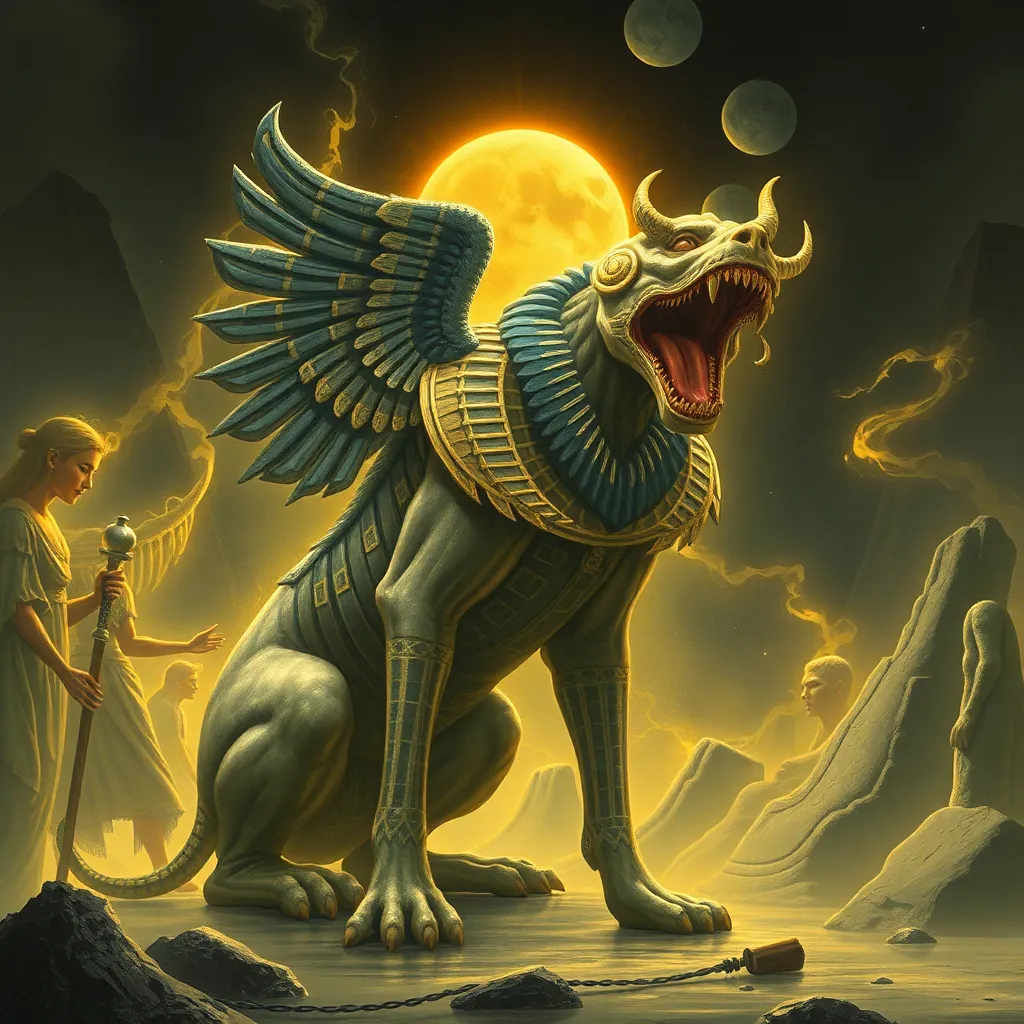Ammit: The Soul Eater in Egyptian Religion
I. Introduction
Egyptian mythology is rich with a diverse array of deities, each embodying aspects of life, death, and the afterlife. Among these, Ammit stands out as a formidable figure in ancient Egyptian beliefs surrounding the judgment of souls. Known as the devourer of the unworthy, Ammit plays a crucial role in the afterlife, reflecting the values and fears of the ancient Egyptians.
This article aims to explore Ammit’s role in Egyptian mythology, her symbolism, and her cultural impact, shedding light on the significance of this complex figure in the context of ancient beliefs about morality and the afterlife.
II. The Origins of Ammit in Egyptian Mythology
Ammit’s origins can be traced back to the early texts of Egyptian mythology, particularly within the context of the afterlife and the judgment of souls. She is often depicted in the “Book of the Dead” and other funerary texts, which elaborate on the rituals surrounding death and the journey to the afterlife.
Physically, Ammit is described as a fearsome creature with a unique composite form, featuring:
- The head of a crocodile
- The body of a lion
- The hindquarters of a hippopotamus
This terrifying amalgamation of powerful animals symbolizes her role as a fierce protector of cosmic order and a punisher of the wicked.
Ammit is closely related to other deities in the Egyptian pantheon, notably Osiris, the god of the afterlife, and Anubis, the god of mummification and the protector of graves. Together, they form a triad that governs the fate of souls in the afterlife.
III. The Role of Ammit in the Judgment of Souls
One of the most significant aspects of Ammit’s role in Egyptian mythology is her involvement in the Weighing of the Heart ceremony, a crucial event that determined the fate of the deceased. During this ceremony, the heart of the deceased was weighed against the feather of Ma’at, the goddess of truth and justice.
If the heart was found to be lighter or equal to the feather, the soul was deemed worthy and allowed to enter the afterlife. However, if the heart was heavier, burdened by sins, it was cast to Ammit, who would devour it.
The heart held immense significance in Egyptian belief systems, as it was considered the seat of intelligence, emotion, and morality. Thus, the judgment process served as a reflection of one’s life and moral choices.
IV. Symbolism and Characteristics of Ammit
Ammit’s composite form is rich with symbolism, as each animal component carries its own meanings:
- Crocodile: Often associated with chaos and danger, representing the unpredictable nature of life and death.
- Lion: Symbolizing strength and protection, reflecting Ammit’s role as a guardian against the unworthy.
- Hippopotamus: A fierce and territorial creature, representing the destructive potential of unchecked power.
This combination of animals illustrates Ammit’s duality; she is both a protector of Ma’at and a punisher of those who fail to uphold its principles. Her fearsome appearance served to instill a sense of moral accountability in ancient Egyptians.
V. Cultural and Religious Significance of Ammit
Ammit embodies ancient Egyptian views on morality and justice. The fear of being devoured by Ammit provided a powerful incentive for individuals to live righteously and adhere to societal norms. This belief reinforced the importance of ethical conduct and the consequences of one’s actions.
In ancient society, Ammit was both feared and revered. Her presence in funerary practices highlighted the seriousness of the afterlife and the moral weight of one’s life choices. Ammit’s image frequently appeared in:
- Art, often depicted in tomb paintings and carvings
- Literature, particularly in texts concerning the afterlife
- Funerary practices, where rituals aimed to appease her and ensure safe passage to the afterlife
VI. Ammit in Modern Popular Culture
In contemporary media, Ammit’s character has been reimagined, serving as a source of inspiration in films, books, and video games. Her representation often emphasizes her fearsome nature and association with the afterlife. Some notable examples include:
- Films: Ammit has appeared in movies that explore Egyptian mythology or the afterlife.
- Books: Modern literature often references Ammit when discussing themes of judgment and morality.
- Games: Video games featuring ancient mythology frequently include Ammit as a character or antagonist.
This resurgence of interest in Ammit and Egyptian mythology highlights a broader fascination with ancient cultures and their belief systems.
VII. The Legacy of Ammit in Egyptian Religion
Ammit’s impact extends beyond her immediate role in Egyptian mythology. She influenced later beliefs and practices within Egyptian culture, shaping how the afterlife was perceived and the moral responsibilities of individuals. Comparatively, her role can be likened to other mythological figures across cultures, such as:
- Hades: The Greek god of the underworld, who governs the fate of souls.
- Yama: The Hindu god of death, overseeing the judgment of souls.
- Chthonic deities: Various cultures have deities associated with the underworld and judgment.
Ammit’s enduring legacy continues to spark interest in academic circles and popular discourse, reflecting the timeless human fascination with morality, justice, and the afterlife.
VIII. Conclusion
In summary, Ammit holds a significant place in ancient Egyptian religion as the soul eater, embodying the complexities of judgment, morality, and the consequences of one’s actions. Her narrative serves as a moral lesson, reminding individuals of the importance of living a righteous life.
Ammit’s story resonates with contemporary audiences, reflecting our ongoing quest to understand human nature and the mysteries of the afterlife. As we explore ancient mythologies, figures like Ammit offer valuable insights into the values and beliefs that shaped human civilization.




